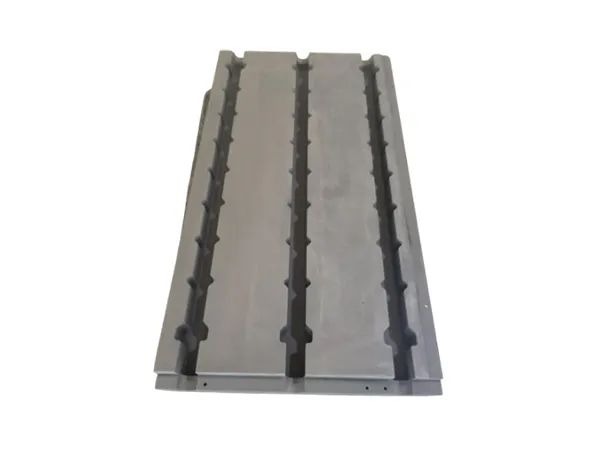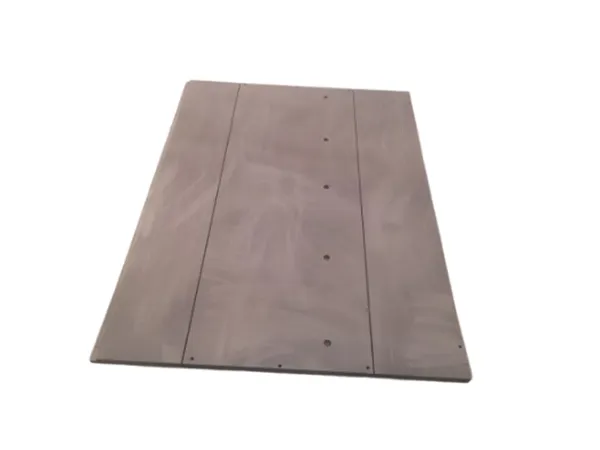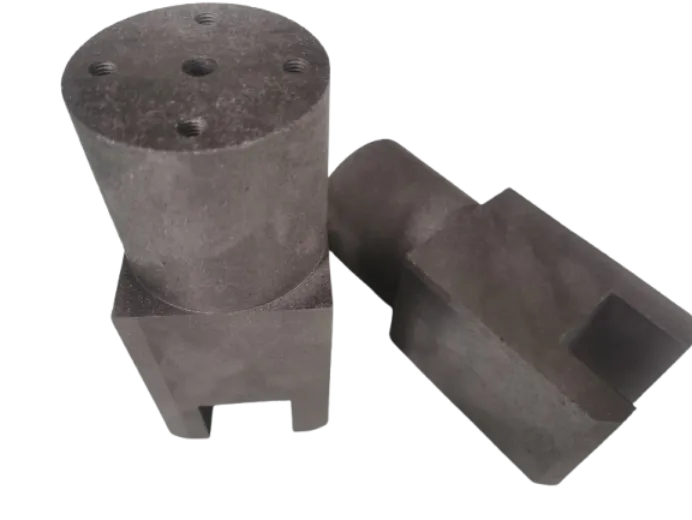Time: 2025-05-14 02:19:00 Source: Cangzhou Carbon Technology Co., Ltd.
Graphite plays a critical role in heat treatment processes due to its exceptional thermal stability, chemical inertness, and excellent heat conductivity. Widely used in high-temperature furnaces, graphite components—such as insulation boards, heating elements, and crucibles—help maintain consistent temperature control and ensure a clean processing environment.
High-Temperature Stability: Graphite can withstand very high temperatures (sublimes at ~3650°C) without melting, making it ideal for furnace linings, insulation, trays, boats, grids, and fixtures used to hold parts during heat treatment.
Low Thermal Expansion: It has a low coefficient of thermal expansion, meaning it doesn't change size or shape significantly with temperature changes, preventing distortion of the fixtures or the parts they hold.
Thermal Shock Resistance: Graphite can withstand rapid temperature changes without cracking, which is common in heat treatment cycles.
Machinability: It can be easily machined into complex shapes for custom fixtures.
Graphite in Heat Treatment Role

Furnace Components & Fixtures:
Heating Elements:
Electrical Conductivity: Graphite is a good electrical conductor, allowing it to be used as a resistance heating element in vacuum furnaces or furnaces with controlled atmospheres. It heats up when an electric current passes through it.
High Emissivity: It radiates heat efficiently, contributing to uniform heating within the furnace.
In induction heating, a non-conductive material might need to be heated. A graphite susceptor can be placed near or around the material. The induction coil heats the graphite susceptor, which then radiates heat to the target material.
Chemical Inertness: Graphite is relatively inert and does not react with many molten metals or materials being heat-treated, preventing contamination.
Non-Wetting: Many molten metals do not "wet" graphite, making it easier to remove the treated part or molten material from graphite crucibles or molds.
Thermal Conductivity: Good thermal conductivity allows for even heating and cooling of the contents within a graphite crucible.

Oxygen Scavenger: In some applications, particularly at very high temperatures in a slightly oxidizing environment, graphite can act as an oxygen scavenger by
reacting with oxygen to form CO or CO2, thus protecting the workpiece from oxidation.
Source of Carbon (Carburizing): In pack carburizing, steel parts are packed in a carbon-rich material (which can include graphite powder, charcoal, and an energizer) and heated. The graphite provides a source of carbon that diffuses into the steel surface, hardening it.
Reducing Agent: Graphite can create a reducing atmosphere, preventing oxidation of sensitive materials.
Graphite powder or coatings can be used as a high-temperature lubricant or release agent to prevent parts from sticking to fixtures or to each other during heat treatment.

While less common, fine graphite particles can sometimes be part of specialized quenching media, though this is not a primary role.
Key Advantages of Using Graphite in Heat Treatment:
Excellent high-temperature strength and stability.
Good thermal and electrical conductivity.
Low coefficient of thermal expansion.
Excellent thermal shock resistance.
Easily machinable.
Relatively low cost compared to some other high-temperature refractory materials.
Chemical inertness in many environments.
Consideration:
One major consideration is that graphite will oxidize (burn) in the presence of oxygen at elevated temperatures (typically starting around 450-500°C). Therefore, when used at high temperatures, it's often employed in vacuum furnaces or in furnaces with inert (e.g., argon, nitrogen) or reducing atmospheres. Special coatings can also be applied to graphite to improve its oxidation resistance.